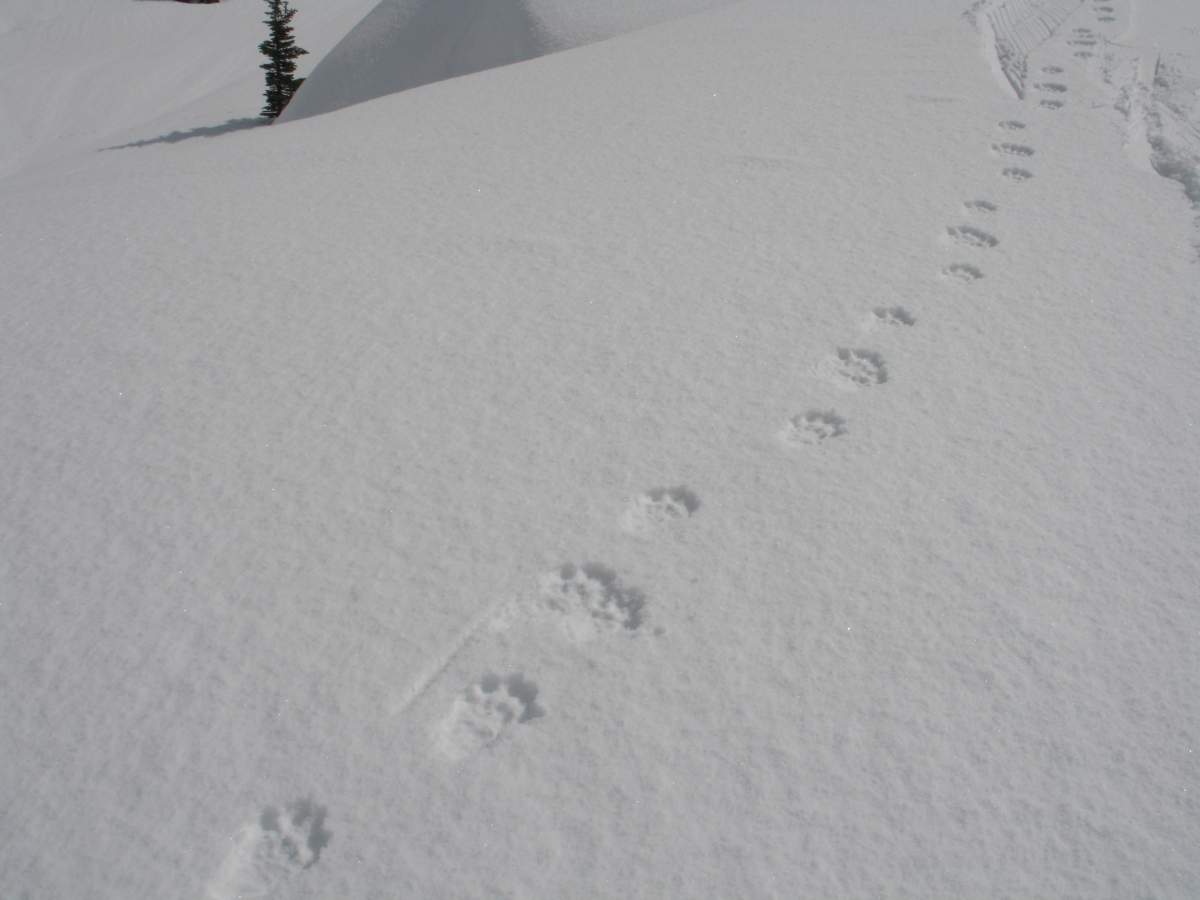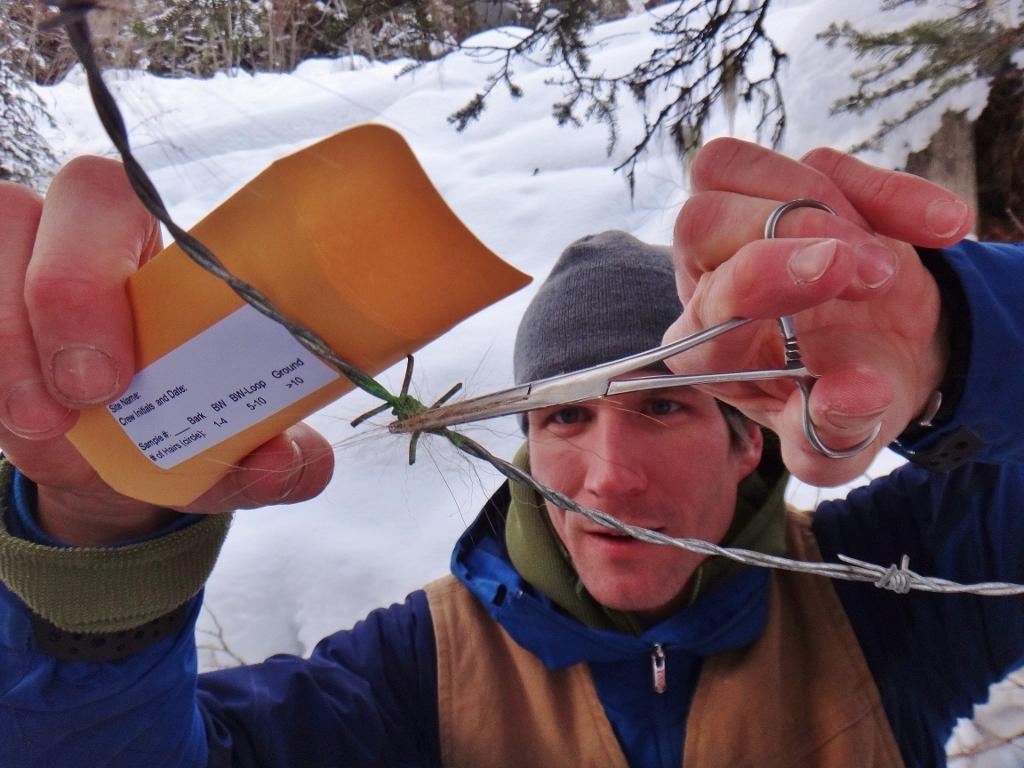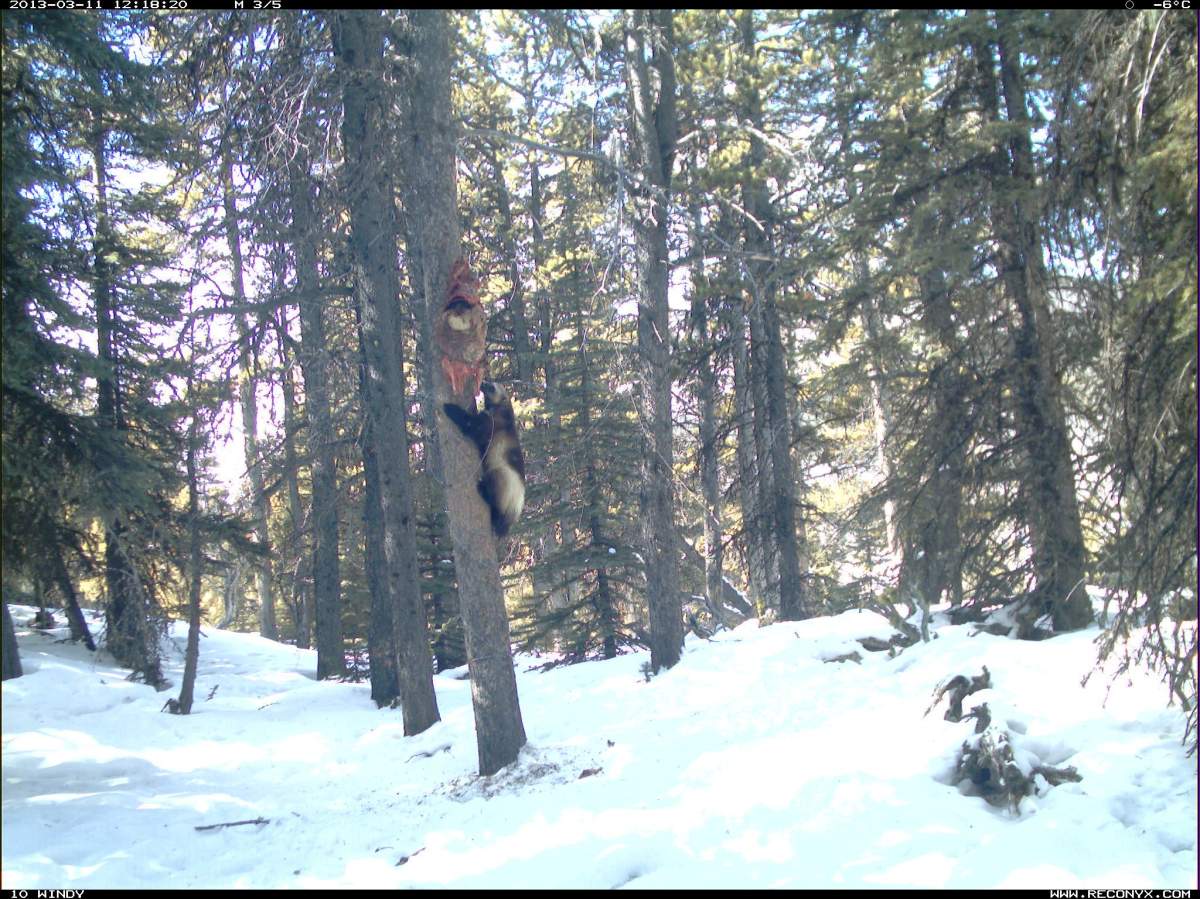Wolverines live solitary lives in some of the most rugged, remote areas of the Rocky Mountains.

It’s one of the reasons they’re one the least studied animals in North America and why researchers have little idea how many actually call Alberta home.
“To study them you really have to study them at a wolverine scale,” Tony Clevenger, a wildlife research scientist with Montana State University’s Western Transportation Institute said.
The mammals range over vast landscapes and defend large territories from other wolverines and predators.
“Of the thousands of kilometers we skied in Banff Yoho and Kootenay national parks during the three year study, our team only twice saw wolverines,” Clevenger said.
However, Clevenger’s team have managed to collect hair samples and video from a total of 49 wolverines in the region by setting up camera and barbed wire while baiting nearby trees with beaver carcasses – a tip they learned from local trappers.
“It’s a bait that doesn’t freeze as much as other baits in the winter so it still gives off some scent,” Clevenger said.

Get breaking National news
Clevenger’s wolverine studies began in 2010 as part of a three year project focusing exclusively on the Banff, Yoho and Kootenay national parks. They found healthy populations to the north of their study region. High densities were also being reported in Glacier and Waterton national parks near the US border. But it was what was in between those areas that encouraged Clevenger’s team to continue their studies for another three years.
“What we’ve been doing, the last three years, is really focusing on this area, this matrix, or this sort of missing piece of the puzzle which is between the two protected areas. What we’ve found there is that the further south you go – the smaller the population. The fewer wolverines are being detected through our surveys. There’s basically a bottleneck.”
“The population becomes less abundant, the genetics become more impoverished.”
It’s unclear why it’s happening but the Yellowstone to Yukon (Y2Y) initiative is hoping to help restore connectivity between the populations.
“There is a genetic disconnect in the region between Banff and Waterton Lakes,” said Y2Y’s president and lead scientist Jodi Hilti. “It is thought that certain activities that humans do – whether it’s creation of roads, or even housing developments in the wrong places – could have an inadvertent, but really negative impact on wolverines.”
READ MORE: Proposed coal mining in the Crowsnest Pass prompts questions
READ MORE: Alberta government says new fence along highway will help save wildlife
Trapping and even climate change could also be factors in the regional decline of this so-called “terrestrial polar bear.”
“They have been shown to be sensitive to declining snow packs,” Clevenger said. “Wolverines have these snowshoe-like paws and it really just allows them to float over the snow
Clevenger and his team concluded their field study in April and will now take a closer look at DNA and other data collected over the last several years to finalize their research. The results could help provide the Alberta and B.C. governments with better frameworks for management of wolverines and many other animals who call western Canada home.
“They’re really a bellwether species for healthy landscapes and healthy mountain ecosystems,” Clevenger said.
“Often what’s not right for wolverines isn’t right for other species,” added Hilti.














Comments